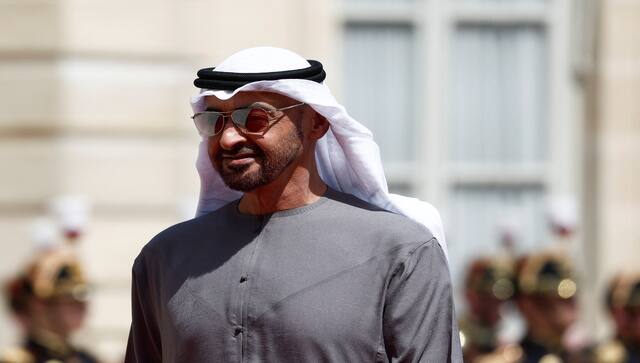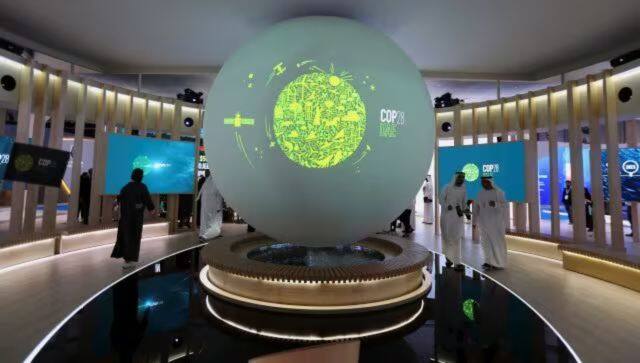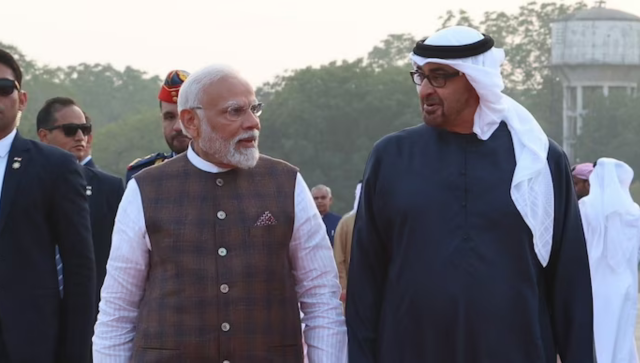Today (13 February), Prime Minister Narendra Modi will visit the United Arab Emirates (UAE). Modi is visiting the UAE from Tuesday to Thursday. This is Modi’s seventh visit to the UAE since 2015 and the third in just eight months. The prime minister, who will inaugurate the first Hindu temple in Abu Dhabi on 14 February, is also slated to hold talks with President Sheikh Mohamed bin Zayed Al Nahyan. Modi and Al Nahyan will discuss ways to further deepen, expand and strengthen the strategic partnership between the countries and exchange views on regional and international issues of mutual interest, according to the MEA. “The prime minister will also meet with Sheikh Mohammed bin Rashid Al Maktoum, the vice president, prime minister and defence minister of the UAE,” the MEA added. “At his invitation, the prime minister will participate in the World Government Summit 2024 to be held in Dubai as the guest of honour and deliver a special keynote address at the summit,” the MEA said in a statement. Modi is also set to give a speech to over 40,000 people today at a stadium event in Abu Dhabi’s Zayed Sports city at an event called ALHAN MODI. This would come as hardly a surprise to anyone who has followed India-UAE ties over the past decade. Indeed, relations have grown from strength to strength. Let’s take a closer look: First steps Modi made his first trip to the UAE in August 2015. Shishir Gupta noted in Hindustan Times that the visit was a first by an Indian prime minister for more than three decades. Indira Gandhi last visited the UAE in 1981. “When IC 184 hijacking happened, the Indian ambassador wasn’t even allow to go into the air base where the hijacked flight was landed before it took off for Kandhar. That was the state of India-UAE relations,” Gupta wrote.
But Modi changed things.
As per Hindustan Times, Modi made reaching out to the Gulf nations one of his first initiatives. “The initial forays were made at the level of intelligence officials, at the levels of the national security advisor, at the level of then foreign secretary, S Jaishankar. When we reached out to the UAE, its leaders said very clearly that ‘you have been viewing us from the prism of Pakistan, we look at you bilaterally’. And that is where it all started. Then we started to engaged bilaterally,” the piece noted. As per Moneycontrol, Zayed was India’s Chief Guest on Republic Day in 2017. The diplomacy paid off. [caption id=“attachment_13035582” align=“alignnone” width=“640”] UAE president Sheikh Mohammed bin Zayed al-Nahyan. Reuters[/caption] By February 2022, bilateral relations between the two countries had been elevated when India and the UAE signed a Comprehensive Economic Partnership Agreement (CEPA). In July 2023, a Local Currency Settlement (LCS) System was agreed upon to promote the use of Indian Rupee and AED (United Arab Emirates Dirham) for cross-border transactions. The relationship took another leap forward in August 2023 with the expansion of the BRICS grouping to include the key Gulf nation and the announcement of the strategically vital India-Middle East Economic Corridor during the G20 Summit in September 2023.
UAE president Sheikh Mohammed bin Zayed al-Nahyan. Reuters[/caption] By February 2022, bilateral relations between the two countries had been elevated when India and the UAE signed a Comprehensive Economic Partnership Agreement (CEPA). In July 2023, a Local Currency Settlement (LCS) System was agreed upon to promote the use of Indian Rupee and AED (United Arab Emirates Dirham) for cross-border transactions. The relationship took another leap forward in August 2023 with the expansion of the BRICS grouping to include the key Gulf nation and the announcement of the strategically vital India-Middle East Economic Corridor during the G20 Summit in September 2023.
India, as the host of the G20, had invited the UAE to be a special guest.
The cooperation between India and the UAE arguably reached its pinnacle at the COP28 climate summit in Dubai. Modi also visited Dubai for the 28th Session of the United Nations Framework Convention on the Climate Change (UNFCCC) Conference of Parties (COP28) hosted by the UAE. He met Nahyan on the sidelines of the summit and reviewed wide ranging and vibrant bilateral ties. During the year, India and the UAE collaborated closely on addressing the global challenge of climate change. Both countries emphasised the urgent need to address climate change through collective global action, respecting the foundational principles of the UNFCCC and the Paris Agreement. They committed to enhancing cooperation on climate ambition, decarbonisation, and clean energy Both countries have discussed various areas of cooperation, including energy, healthcare, defence, space, and climate change. India and the United Arab Emirates in January signed a deal to explore the establishment of grid connectivity. The deal is part of a total of four memorandums of understanding signed between New Delhi and Abu Dhabi in the Vibrant Gujarat Global Summit. In January, Nahyan addressed the 10th edition of the Vibrant Gujarat Global Summit 2024 in Gandhinagar – a symbol of UAE’s strong ties with India and Modi. India and the UAE also signed a slew of MOUs including on investment cooperation in renewable energy, innovative healthcare projects, cooperation on food park development and on creating sustainable, green and efficient ports. The Union Cabinet in February approved an investment treaty with the United Arab Emirates (UAE) that is likely to significantly boost bilateral economic engagement in a range of areas, including manufacturing and foreign direct investment (FDI). The two countries are already among each other’s top trading partners with a bilateral trade of about $85 billion in 2022-23, according to official data. [caption id=“attachment_13439642” align=“alignnone” width=“640”] A view shows the ‘Cop28 UAE’ logo on a globe, during Abu Dhabi Sustainability Week (ADSW), in Abu Dhabi, UAE. More than 160 member nations, including India, the UK, France, Germany and Japan, will participate in the UN climate conference. File photo/Reuters[/caption] The UAE is also among the top four investors in India in terms of foreign direct investments in 2022-23. As per Business Today, the UAE is a key oil supplier to India. A
Vantage piece
also noted that non-oil trade is also doing roaring business thanks to the 2022 free trade deal. People to people contact The UAE is also home to around 3.5 million Indians. “About 3.5 million strong and vibrant Indian community forms the largest expatriate group in the UAE. Their positive and well-appreciated contribution in the development of their host country has been an important anchor of our excellent bilateral engagement,” the MEA said.
A view shows the ‘Cop28 UAE’ logo on a globe, during Abu Dhabi Sustainability Week (ADSW), in Abu Dhabi, UAE. More than 160 member nations, including India, the UK, France, Germany and Japan, will participate in the UN climate conference. File photo/Reuters[/caption] The UAE is also among the top four investors in India in terms of foreign direct investments in 2022-23. As per Business Today, the UAE is a key oil supplier to India. A
Vantage piece
also noted that non-oil trade is also doing roaring business thanks to the 2022 free trade deal. People to people contact The UAE is also home to around 3.5 million Indians. “About 3.5 million strong and vibrant Indian community forms the largest expatriate group in the UAE. Their positive and well-appreciated contribution in the development of their host country has been an important anchor of our excellent bilateral engagement,” the MEA said.
Registrations for the ALHAN MODI event have already closed due to demand.
The Indian ambassador to the UAE Sunjay Sudhir told LiveMint, “Wherever the Indian diaspora is, they’re always very keen to listen first-hand to Prime Minister Modi. And we can just see their enthusiasm here, because when we opened the registrations for Ahlan Modi. We had to actually close the registration as soon as the mark touched 65,000 because we could not accommodate anymore.” “It is quite an elaborate visit, if you look at it, because this visit will take the prime minister to both Abu Dhabi and Dubai. He’ll have bilateral meetings with President Sheikh Mohammed bin Zayed, as well as with the Vice President, Ruler of Dubai, the Prime Minister, and Sheikh Mohammed bin Rashid in Dubai," he added. First Hindu temple in Abu Dhabi Modi is also set to make history by inaugurating the first Hindu temple in Abu Dhabi.
As per Mint, the foundation for the temple was laid on 20 April, 2019. In May, diplomats from more than 30 nations visited the site. The BAPS temple, a pink sandstone temple, has been built on a 27-acre plot granted on lease by President Sheikh Mohammed bin Zayed Al Nahyan for as long as “the sun shines.” “The significance of this mandir is to breathe in a fresh air of harmony where cultures, religions, communities, and countries can coexist," Brahmaviharidas Swami, Head of BAPS Hindu Mandir told ANI. What do experts say? A piece in Outlook noted that Modi has left his imprint on India’s flourishing relations with the Arab-Gulf. “The renewed vigour of the ties is rooted in the five pillars of Narendra Modi’s foreign policy: Sammaan—respect for nation’s sovereignty; Samvaad—greater engagement; Suraksha—security; Samriddhi—shared prosperity; Sanskriti and Sabhyata—instilling a culture that world is one family,” the piece stated.
The piece said Prime Minister Modi’s Arab-Gulf policy has set ’new benchmarks’ in the history of Indian foreign policy.
Impact Shorts
More Shorts“The expanding arc of India-Arab Gulf relations will be central to heralding the era of an Asian century,” the piece concluded.
The Vantage piece noted the evolution of India-UAE relations from immediate concerns long-term goals.
“From countering Pakistan to securing energy supplies, the partnership has matured. Looking ahead, as the world transitions towards an oil-free era, both nations are exploring avenues to diversify their relationship,” the piece stated.
With inputs from agencies
)